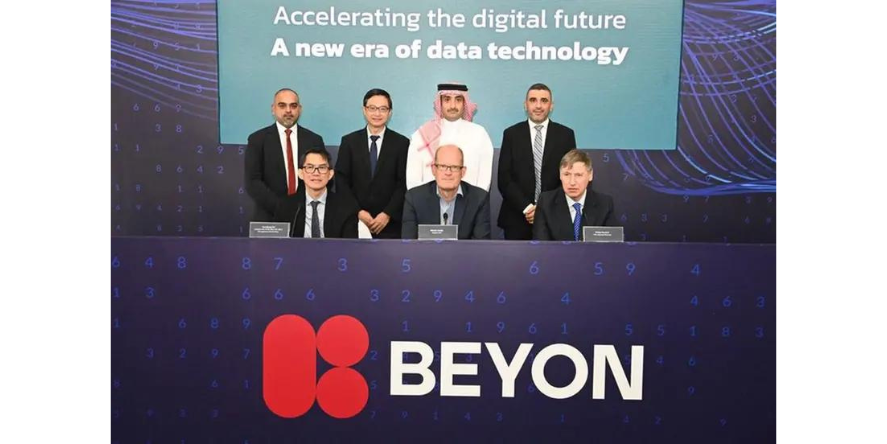An Amalgamation of Electrification, Decentralization, and Digitization among the Key Trends Driving Advancements in Power Grid
Electrification, decentralization, and digitization are bringing game-changing transformations to drive the transition toward developing a sustainable power grid.
These three factors act cyclically, reinforcing and amplifying developments across the energy landscape. For the transformation to occur, the power grid infrastructure requires:
(i) A highly resilient grid that can integrate discrete power generation units.
(ii) A dynamic grid that can deliver enough power to charge electrified transportation systems at any specific geography or time.
Grid Edge is a technology umbrella term consisting of multiple technologies that exist between the energy generation side (grid), transmission and distribution, and the energy consumption side (residential sector, commercial buildings, or industrial units). Technological innovations in hardware and software forms can be found in grid edge.
Hardware technology solutions may include decentralized/distributed renewable power generation units, distributed energy storage, electric vehicles, smart meters, smart thermostats, building controls, and smart appliances. Software technology solutions may include automated demand response management systems (ADRMS), data analytics, digital twin, predictive maintenance, and integrated distribution planning systems.

According to the World Economic Forum’s report, “The Future of Electricity: New Technologies Transforming the Grid Edge,” grid edge technologies have the potential to bring more than USD 2.4 trillion worth of value to the energy industry by creating new business models, bringing dynamic energy markets, increasing the system’s efficiency, and optimizing capital allocations.
Additionally, it is estimated that the stakeholders in the global energy sector will allocate about 30% of their investment in information technology-related solutions to leverage the benefits offered by grid edge.
Smart Grid Technologies and Energy Storage Essential to Accommodate the Growing Renewable Power Deployment and Electrification
As global energy shifts from fossil fuel dominance toward a greater capacity for renewable sources, the need for a more accommodative and smarter power grid has become apparent. The future of energy is expected to comprise multiple decentralized and discrete power generators and consumers.
Further, when the large fraction of total energy generation is likely to come from renewable energy, the challenge of intermittency associated with renewables must be overcome. Such challenges can be effectively mitigated with the help of smart grid technologies and energy storage. A significant fraction of society is likely to embrace the concept of prosumerism, i.e., self-power generation and consumption, which is an emerging trend that will likely alter the overall power consumption behavior.
These energy trends will not conform to the existing power infrastructure, which has evolved alongside the concept of centralized power generation. Grid edge equips grid participants with digital solutions to reduce costs, optimize and maximize the value of distributed resources, and facilitate transactive two-way grid interaction to enable market participation.
Another important aspect of the electricity grid transformation is increased connectivity and data gathering capabilities of grid edge technologies. The grid edge harnesses the inflow of real-time data via the internet of things (IoT) and information and communications technology (ICT), creating opportunities for the utilities and their customers.
It provides consumers the ability to optimize their power consumption pattern in accordance with the real-time market prices, allowing consumers to participate in energy markets through demand response. Similarly, utilities can benefit from grid edge that allows the utilities to seamlessly manage load, thereby increasing grid reliability and offsetting new infrastructure requirements.
The data-driven and IoT-powered effect on the power grid is expected to result in the evolution of new business models and pricing structures. For instance, the concept of a building energy management system (BEMS) that optimizes the electricity consumption pattern, benefitting from dynamic electricity prices, may enable energy savings of as much as 30%. In addition, grid operators can benefit from the evolving data-driven business models that have the capability of real-time asset monitoring and predictive maintenance features.
Many automotive manufacturers are manufacturing electric vehicles (EVs), and many economies have set a target for EV deployments to eventually phase out combustion engines.
The electrification of the transportation sector is expected to bring numerous challenges to the power grid: high power demand at certain time periods in certain geographies, the requirement for EV charging stations integrated with the power grid alongside the entire road network, and the utility’s ability to balance these energy demands. Grid edge technologies will address all of these challenges and present new opportunities such as converting EV batteries into bi-directional, vehicle-to-grid storage assets.
The concept is to use an autonomous power grid to utilize the EV’s battery when there is a need for short bursts of power or to balance the load. Solutions such as these will require balancing the life expectancy of vehicle batteries and the utility value of vehicle driving with the corresponding utility value of grid services. Currently, there is not enough data to predict the exact effect of EV charging on the power grid; EV users may charge their batteries when returning from work, utilities may use charging EVs as micro-energy storages for load balancing, or autonomous EVs may travel to the nearest charging location for recharging and on-demand vehicle-to-grid storage utilization.
The possibilities of the EV future are limitless and require a dynamic and resilient power grid with efficient networking capabilities such as smart metering, automation systems, smart sensors, IoT, and beyond-the-meter optimization and aggregation platforms.
Heating electrification is also expected to play a critical role in the future of a sustainable ecosystem. In cold climates, electric heat may overburden the required electricity, necessitating upgrades in electricity transmission and generation systems. In hot climates, the demand for air conditioning can be partially mitigated with positive correlations with solar energy.
A mix of renewable energy and low-carbon alternatives such as natural gas, hydrogen, and biofuels may be used to generate heat to smoothen out the electric load. Overall, careful management of heat loads would be required for a minimum carbon footprint without creating new stresses for the electric grid.
Innovation Trends, Patents, and Growth Outlook
Driven by growing environmental awareness and increasingly stringent emission norms, industry stakeholders across the globe are investing heavily in technological advancements focused on increasing the cost-effectiveness and efficiency of technologies adhering to zero-emission protocols.
Following this, the industry has witnessed a consistent drop in prices of grid edge technologies along with an uptick in grid edge technology capabilities; smart meters, connected devices, and grid sensors are helping utilities efficiently manage the electricity network and provide real-time information about energy demand and supply.
It is important to note that from 2018 to 2021, more than 2,000 patents have been published, with maximum contributions by large digital technology companies and smart analytics organizations. The most prominent contributors include grid edge stakeholders such as Siemens AG, Hitachi Ltd, Google LLC, and Georgia Tech Research Corporation.
Further, the key research focus of all the grid edge stakeholders has been to fast-track advancements in network technologies for efficient energy transmission, hardware and software to support autonomous grid edge device regulations, grid edge controllers, and decentralized energy-generating network management, among others.
We are going through one of the most critical transformational changes in the electricity infrastructure’s history, a transformation from centralized fossil fuel-based power to decentralized non-fossil fuel-based power. Grid edge will play the most critical role in the transition toward a sustainable and low-carbon future, creating a multitude of growth opportunities for all grid participants.
Frost & Sullivan believes that the crux of grid digitalization is primarily happening at the edge of the power grid where technologies such as decentralized energy generation and storage, networking, and electrification are equipping grid participants with greater control, efficiency, and resiliency of the power grid.
Authored By: Shrinivas Tukdeo, Research Director, TechVision, Frost & Sullivan

About the Author: Shrinivas Tukdeo is a Research Director with Frost & Sullivan’s TechVision team. He has over 11 years of industry experience in consulting and advisory services and research recommendations. He has been developing entry strategies and risk analysis for companies in the renewable energy industry with a special focus on climate change, energy storage, waste management, and energy management. He has expertise in executing carbon and energy investigations for energy conservation, efficiency improvements & cost reduction measures.
Article shared by Frost and Sullivan



















